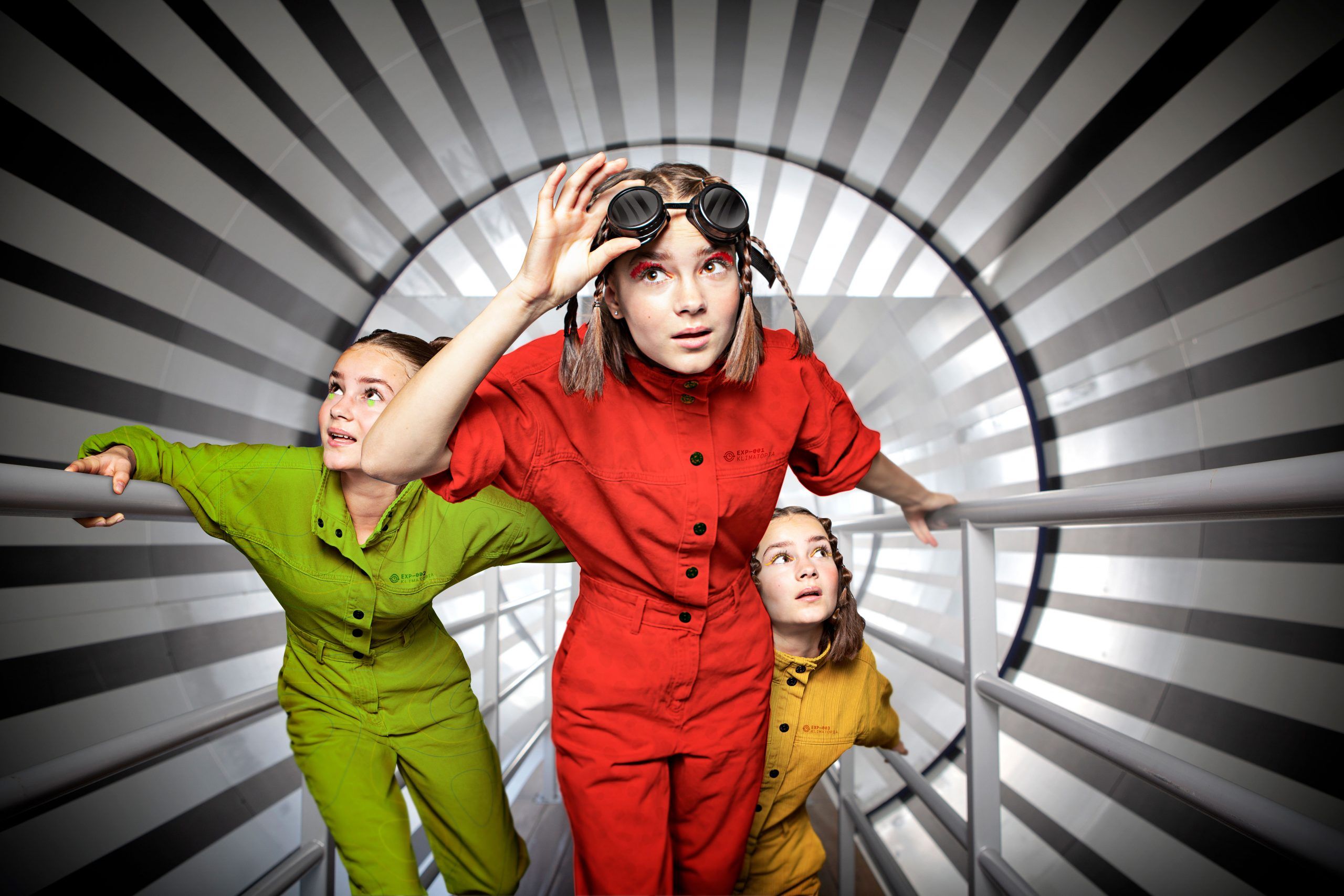Experimentarium’s latest exhibition ‘Klimatopia’ invites visitors to travel into the future.
Back to which future
Three girls from the future have accidentally crashed into the present. Midori, Kiiro and Aka come from three different versions of Earth in 100 years.
In Midori’s future world, the climate goals have been reached and the world is better balanced. Kiiro’s world is lacking resources and the climate is unstable. In Aka’s, ecosystems are collapsing, water levels have risen sharply and we humans have had to adapt to a daily life of deprivation.
Our mission as guests is to send the three girls back to one of the three future worlds, but their final destination will depend on the choices we make today in our everyday lives: the food we eat, the transport we use, the electricity and heating we use, and the things we buy.
Without a doubt, ‘Klimatopia’ is worth the trip to the museum on its own, particularly if you haven’t started your Christmas shopping.
It provides relevant scientific excuses to explain to family and friends why you’ve avoided the holiday gift overload this year: just lay the blame on our great-grandchildren who refuse to live in Aka’s world!
Matter of life or death
COP26, the recent 2021 UN Climate Change Conference, reminded us that significantly higher ambitions and action are needed in order to limit the Earth’s warming to 1.5 degrees this century – the goal set by the Paris Agreement back in 2015.
“We will never know when the tide raises and swallows our homes,” an activist from Papua New Guinea, representing vulnerable countries at risk of losing so much, told COP26 delegates. Massive floods, devastating wildfires and rising seas are only a few of the consequences.
“This is not something that’s 10, 20 or 30 years down the road: this is now, and we have to act now,” echoed former US president Barack Obama.
The pandemic has demonstrated the level of resilience the world is able to endure.
Build back better, greener
The darker the days, the more we witness a world that is struggling to restart after already a year and a half of a costly pandemic, which is still log-jamming ports with goods all around the world.
With record-breaking lines of container cargos outside major ports, all kinds of products are sitting on ships awaiting their turn to offload. It’s a metaphor for how our economies need a sustainable recovery.
“We still have a chance,” Dan Jørgensen, our minister for climate, energy and utilities, announced optimistically, despite a last-minute move by India and China that nearly saw COP26 end with no agreement. But in the end at least the climate talks succeeded in keeping the process alive.
Luckily, we live in a country that is paving the way by setting ambitious climate goals through its Climate Act. The Danish agenda is aggressive when dealing with climate change. After all, Denmark only accounts for only 0.1 percent of global emissions.
“If Denmark disappeared tomorrow, the carbon reduction might not even register,” Jørgensen told Yale University on September 23. “We want to show the world that you can have a decarbonised economy that is wealthy, where its people enjoy a high quality of life.”
So, a bit like in Midori’s green world.


